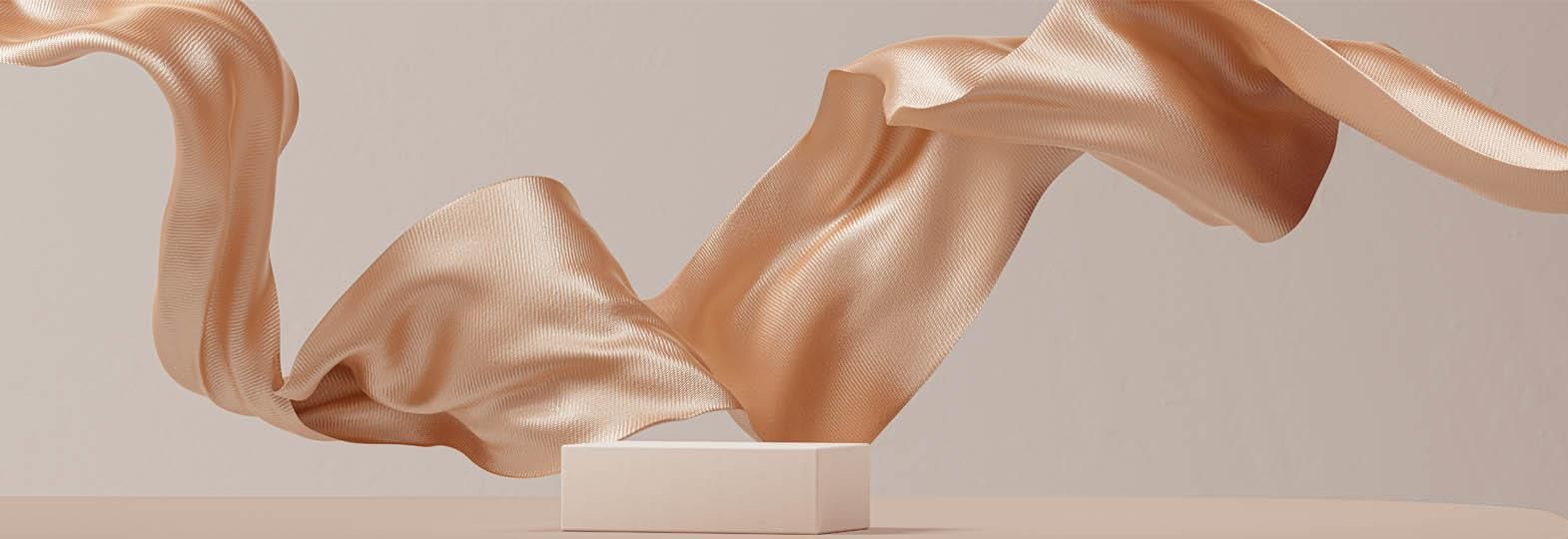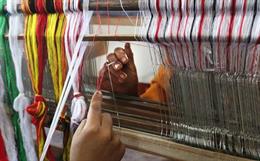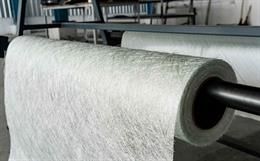With the growing demand and development in the field of technical textiles, textiles have found use in the cosmetic and skincare field. The main concept behind the use of textiles in cosmetics is that it releases the active pharmaceutical ingredients present on the textiles on the contact with skin. The cosmetic textiles allow for revitalising and freshening when the body movement takes place. The basic principle of the cosmetic textiles is imparting certain pharmaceutical and cosmetic ingredient into the fabric structures to gain the functional properties of these active ingredients. For this purpose, the process of microencapsulation has been found useful for controlled release of these compounds. Microencapsulation is an emerging technology for controlled release of the active ingredients in the cosmetic textiles. The increasing demand in the cosmetic textiles have encouraged the researchers and textile manufacturers to focus on innovative ways to impart active substances into the textiles. The advances are also being made to find opportunities for enhancement of cosmetic textiles and improving the methods to enhance the effectiveness of the cosmetic textiles available in the market.
Microencapsulation
The process of microencapsulation is rapidly advancing due to ease of its application and its versatility. The main advantage of using the process of microencapsulation is that it controls the release of active compounds and protects them from the hazardous environment like acidity, alkalinity, heat, moisture, evaporation an oxidation. The microencapsulation also protects the active compounds from interacting with other compounds to prevent the degradation of the compounds or polymerisation. The microencapsulation is the finishing process wherein microencapsules are developed using a polymer coating over the solid or liquid particle. The core contents involve the active compounds which are released under controlled environmental conditions for specific end use.
The microencapsules generally contain an active ingredient and a wall shell. The active ingredients are usually liquid or solid and have certain specific properties which are to be added to the textile surfaces. The wall shell is the natural, synthetic or semi synthetic polymer coating which is used to protect the active ingredients. The microencapsulation process helps to enhance the efficiency of use of the active ingredients and thus minimising the damage caused to these compounds due to the environmental conditions. The mechanisms of release of the compounds depends on the use of the wall shells. The core contents of the microcapsules could be released by various processes like friction, heat, pressure, temperature, diffusion, biodegradation and dissolution of the wall shells.
History of Microencapsulation
The history of microencapsulation dates back to 1930s when the inner core material was trapped inside the shell material using the spray drying technique. The first application of encapsulation was developed by Barrett Green of Natural Cash Register Company to develop novel printing system. The colourless dye was incorporated in the oil phases which was then coated with a paper sheet with acidic clay. Afterwards, the rights for the microencapsulation were acquired by US based Eurand America. Since then, various techniques for microencapsulation were developed and its applications have been in different fields like agriculture, pharmaceutical, chemical, cosmetic, food processing, toiletry etc. Nowadays, the use of microencapsulation is mainly in the development of textiles to enhance their value like, aromatic fabrics, climate-controlled fabrics, medical textiles etc.
There are various methods of microencapsulation like complex coacervation, polymer-polymer incompatibility, spray drying, centrifugal extrusion, interfacial polymerisation, in situ polymerisation, air suspension coating, pan coating and emulsion hardening process.
Application of Microencapsulation in Cosmetic Textiles
Cosmetic textiles are also referred to as cosmetotextiles which offers fast growing market for the textile and cosmetic industry. The cosmetic textiles use wide range of agents like perfumes, essential oils, aromas, sunlight protection agents, anticellulite agents, antioxidants, vitamins, moisturising agents, cooling agents, and anti-ageing agents. The cosmetic textiles were generally used to improve the physiological conditions of the skin. The microcapsule was initially developed to gradually release the active compounds present in it without breakage. But when it was subjected to slight pressure due to body movement, the active compounds were released gradually. The most common compound used for the shell is β-cyclodextrin.
The scientists (Hak et al., 2000) used the compound β-cyclodextrin which was embedded into cellulosic fibres through N-methylol-acrylamide. The microcapsules used were benzoic acid and vanillin which acted as antibacterial agent along with providing the aroma. Wang et al., 2005 also developed aromatic cosmetotextiles using β-cyclodextrin as wall shell which released aroma from the fabrics during use and lasted for 30 days. Similarly, the cosmetic textiles were developed using yeast cells through cross linking agents and binders. The yeast cells used as wall shell offered various advantages like high loading capacity, protection from light, air and severe environmental conditions and cost effectiveness.
Chitosan was also used as wall shell in different cosmetic textiles which also offered various advantages after using with binding agents. Chitosan is cost effective and allowed slow and efficient release of the active compounds, and provided hydration to the textile materials. Melamine-formaldehyde capsules containing essential oils and the phase change materials are also used in the cosmetic textiles.
The coolant like questice is also used in cosmetic textiles which is a slow-release coolant. The coolant when comes in contact with the enzymes released by the skin produces menthol which provides cooling sensation to the skin. Moisturising agents like pyrrolidone carboxylic acid (PCA), the primary constituent of the natural moisturising factor (NMF), is also released during the cooling process which imparts hydration to the skin.
Availability of Cosmetic Textiles
The process of microencapsulation provides an opportunity to enhance the properties of textiles and imparts value addition to textile materials. Several companies have come forward to aim for providing better skin benefits.
Cognis-Skintex: This Germany-based textile chemical company used microencapsulation for cosmetic textiles through chitosan. The microcapsules are incorporated to natural as well as synthetic fibres. The wide variety of encapsulated products are offered by the brand which offers properties like moisturising, cooling, and mosquito repellent finishes. The company also provides reloading of the microcapsules after several washes to prolong the functional properties of these textiles.
Bio-Cap: This United Kingdom-based company also uses microencapsules to develop its biocapsule textile products known as biocap. The active ingredients which are used by the company are vitamins and aloevera that provide different skin benefits. The company is also offering the anticellulite treated microencapsulated textiles for cooling effect.
Woolmark Development International Limited (WDI): This company makes use of sensory perception technology to encapsulate the textiles for cosmetic use. The active ingredients used are aroma, moisturisers, anti-bacterial and anti-fungal properties, and cellulites. The microcapsules are used in a variety of products like apparel, hosiery, interior textiles, home textiles etc.
The cosmetic textiles have increased their potential and expanded through the use of different active ingredients. Presently, the cosmetic industry is focused on development of aromatic textiles, skincare textiles and stress management textiles. Other areas of cosmetic textiles which could be explored are body slimming, hair care, medical textiles etc.
Disadvantages of Microencapsulation in Cosmetic Textiles
1. High cost of production of microencapsulated textiles.
2. Less Reproducibility.
3. Oxidation of the encapsulated products on the surface of the textiles which can cause change in the fragrance of the product.
4. The activity of active ingredients decreases after few washes.
5. Change in the properties of polymer matrix in response to environmental conditions, causing the product to function differently in varying environmental conditions.
6. The properties of core or active ingredients may change with change in environmental conditions like temperature, heat etc.
7. The limitations are there due to high toxicity and allergic nature of certain compounds.
Conclusion
The aromatic textiles have found their irreplaceable use in the textile industry. The technological advancement and increasing awareness of skincare has led to the development in the field of cosmetic textiles. The customers are demanding microencapsulated fabrics to enhance their skincare textiles. The technique of microencapsulation has been used in a variety of textile materials like scented scarves, handkerchiefs, scented and anti-bacterial towels, bedsheets, upholstery fabrics etc.
- Hak, L.M., Jong, Y.K. & Sohk-Won, K. 2000, ‘Grafting onto cotton fibre with acrylamidomethylated β-cyclodextrin and its application’, Journal of Applied Polymer Science, vol. 78(11), pp. 1986-1991
- Wang, C.X. & Chen, S.L. 2005, ‘Aromachology and its Application in the Textiles Field’, Fibres and Textiles in Eastern Europe, vol. 13(6), pp. 54
- Cheng, S. Y., Yuen, C. W. M., Kan, C. W., & Cheuk, K. K. L. (2008). Development of cosmetic textiles using microencapsulation technology. Research Journal of Textile and Apparel, 12(4), 41-51.
- https://pharmacampus.in/novel-drug-delivery-systems/microencapsulation-advantages-and-disadvantages







